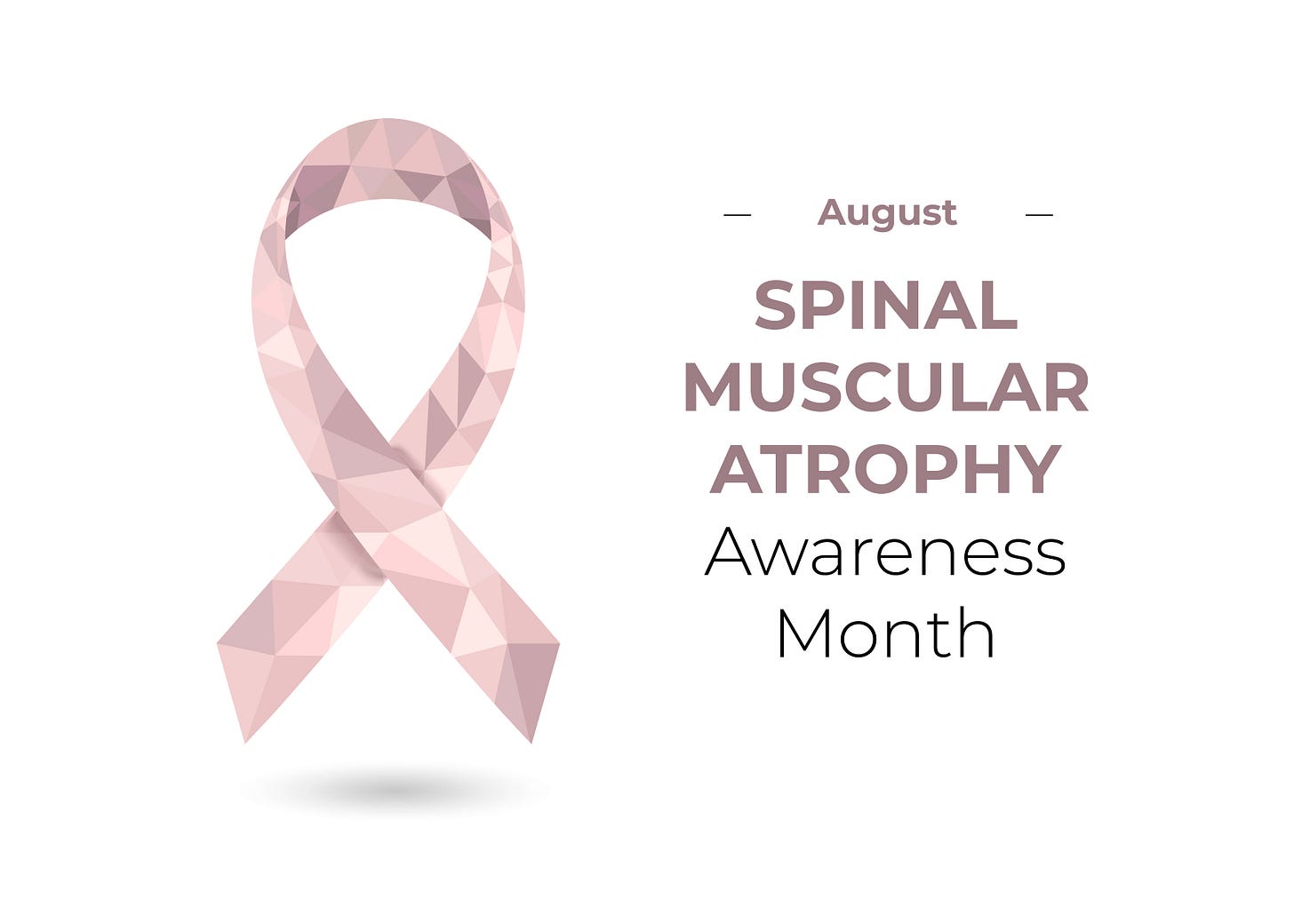August is Spinal Muscular Atrophy Awareness Month
Written By Devika Chauhan
August is spinal muscular atrophy awareness month. The term atrophy refers to the “waste away” or reduction in size of the body’s organs or tissue as result of degeneration of cells. Spinal muscular atrophy (SMA) is a genetic condition which affects the central nervous system, peripheral nervous system and voluntary muscle movement. Hence, why the spine is heavily impacted as many motor neurons that control muscle movement are located in the spine. This article provides a quick overview of what SMA exactly is and to raise awareness of this genetic disorder.
SMA heavily affects the ability of an individual to walk, crawl, sit up, or even control head movement. SMA is described as a genetic condition causing muscle weakness, and atrophy (the reduction of muscle size) It is caused by the loss of nerve cells, specifically motor neurons, within the spinal cord. Due to the lack of these neurons responsible for motor coordination, this heavily affects the ability to control and carry out voluntary movement. To dive deeper into the biological aspect, mutations in the SMN1 (survivor motor neuron 1) gene causes SMA. Motor neurons require this gene to remain healthy, but SMA restricts this essential protein from reaching the motor neurons. This results in the shrinking of voluntary muscle movement.
There are 4 types of SMAs:
SMA Type 1 (AKA Werdnig-Hoffman disease)
This is one of the most severe forms of SMA, which is detected from birth - 6 months after. 60% of SMA cases are comprised of SMA type 1. Symptoms include difficulty swallowing and breathing, as well as hypotonia. Children with type 1 SMA die before their second birthday
SMA Type 2 (AKA Dubowitz disease):
This second type of SMA is detected from 6 - 18 months after birth. Symptoms include hypotonia (usually affecting legs more than arms). 70% of people with SMA detected from 6-18 months, will live until late 20s. Respiratory issues are the primary cause of death for those with SMA type 2.
SMA Type 3 (AKA Kugelberg - Welander Disease):
Detected after 18 months of age. Symptoms of SMA type 3, include lower limb muscle weakness and difficulty walking. Usually does not greatly impact life expectancy
SMA Type 4:
This is the mildest form of SMA, which is typically detected after the age of 21. Muscle weakness symptoms still persist in SMA type 4, but they are much slower and gradual. Typically does not affect life expectancy
References
Cleveland Clinic. (2014). Spinal Muscular Atrophy (SMA). Cleveland Clinic; Cleveland Clinic. https://my.clevelandclinic.org/health/diseases/14505-spinal-muscular-atrophy-sma
KidsHealth.org, & Ben-Joseph, E. P. (n.d.). Spinal Muscular Atrophy (SMA) (for Parents) - Nemours KidsHealth. Kidshealth.org. Retrieved July 31, 2024, from https://kidshealth.org/en/parents/sma.html#:~:text=Spinal%20 muscular%20 atrophy%20(SMA)%20is
Spinal Muscular Atrophy - Types of SMA | Muscular Dystrophy Association. (2015, December 18). Muscular Dystrophy Association. https://www.mda.org/disease/spinal-muscular-atrophy/types
Written By Devika Chauhan from MEDILOQUY


